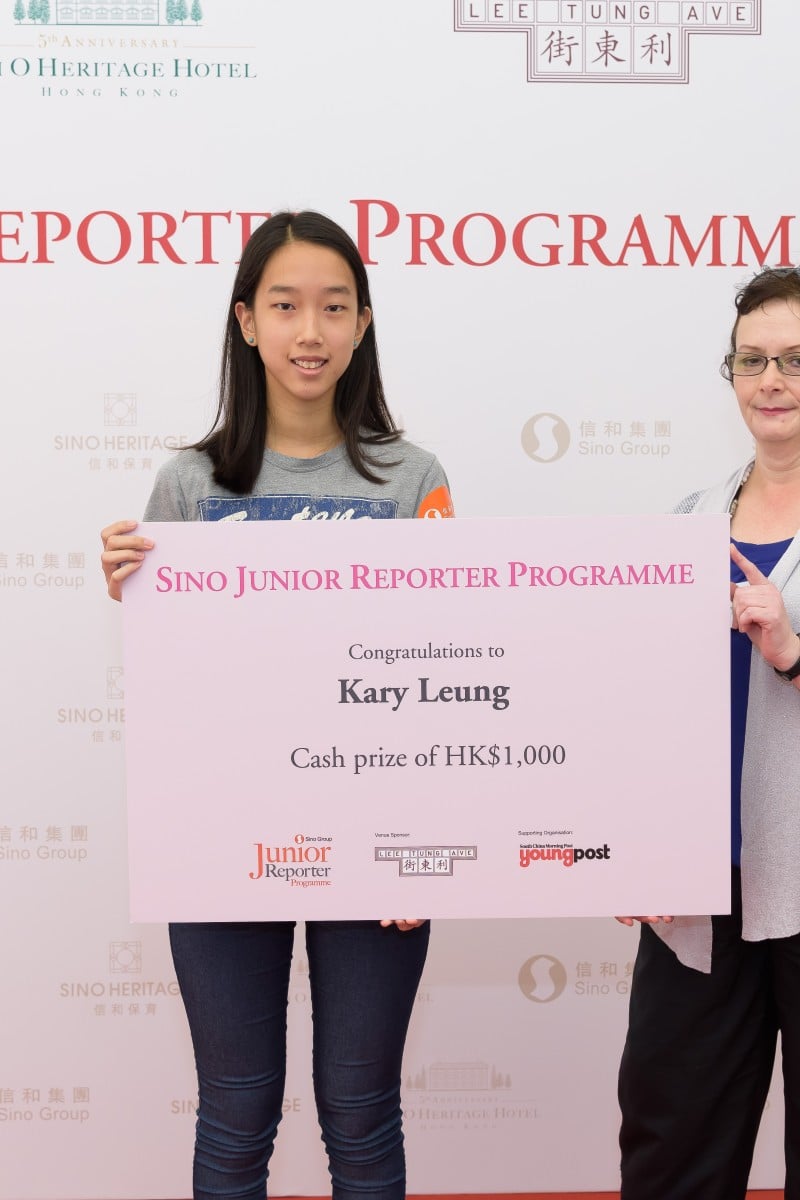
2nd runner-up: Tai O's food and cultural heritage on display at the Tai O Heritage Hotel
Sino Group Junior Reporter Programme nurtures future journalists and promotes local culture
 2nd runner-up Kary Leung Ka-wing of Good Hope School receives her prize from the Editor of Young Post, Ms Susan Ramsay.
2nd runner-up Kary Leung Ka-wing of Good Hope School receives her prize from the Editor of Young Post, Ms Susan Ramsay.To promote local culture and nurture future journalists, 55 shortlisted applicants of the Sino Group Junior Reporter programme 2017 attended a journalism training workshop and cultural tour in Tai O. During the one-day event, they had a chance to interview the management staff of the Tai O Heritage Hotel.
Tai O is a fishing town located in Lantau Island also known as the “Venice of Hong Kong” due to its spectacular scenery and tranquil, secluded environment. It is a historical site rich in culture, and especially in food.
The Tai O Heritage Hotel was originally a police station guarding the western border between China and Hong Kong. It was built in 1902, closed in 2002. After revitalisation, it reopened in 2012 and has been operating as a heritage hotel. The Hotel has been awarded an Award of Merit by UNESCO 2013 Asia-Pacific Awards for Cultural Heritage Conservation due to its significant contribution to social engagement in Tai O as well as Hong Kong.
The hotel building showcases beautiful modern architecture and at the same time, retains the most original structure including the custody room and holding cell, now used as the hotel reception area.
With only 9 rooms, the Hotel is probably the smallest establishment in Hong Kong. However, one should not be fooled by its size.
“This is a very small hotel, but it has everything you need,” said Raymond Ting, Executive Sous Chef of Tai O Heritage Hotel. Under his management, the dishes in the hotel make good use of the village’s traditional food such as shrimp paste. Its signature drink, a mangrove juice, represents the colour of the Tai O sunset.
Some may worry that the western culture will eventually take over local cuisine in the food industry. But Ting thinks otherwise.
“Hong Kong is a multicultural city; we Hongkongers are able to absorb western culture and turn it into our own,” he said.
Take his Tai O shrimp pasted pork chop bun as an example. Shrimp paste is an iconic delicacy of Tai O; it is a salty pink paste made from shrimp which is fermented under the sun. In his creation, Ting is able to skilfully transform the local elements in a fusion dish, combining East and West.
With time, the precious culture and knowledge we have today may be forgotten. What can we do about it?
“We should be proud of our own culture,” said Ting. “What we can do is treasure it and promote it to the next generation and foreigners. Hopefully, our culture will be passed on decade by decade.”
